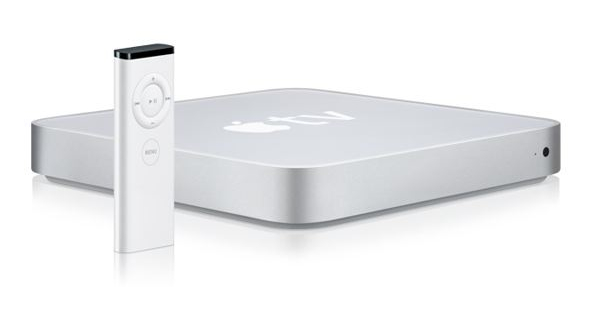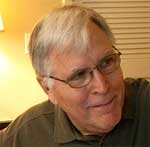Bianculli here: Guest contributor Tom Brinkmoeller proudly considers himself and his values old-fashioned, but today he takes on something decidedly NEW-fashioned: an Apple TV. Read on, to get to the core of his analysis...

Apple TV Puts Some Programming Power in Viewers' Hands
Consider the following a short burst of enthusiastic applause for a piece of TV-related equipment I ignored for almost three years.
Apple introduced Apple TV in September 2006. At the time, I tried to learn more about it and what it did by searching the Apple website and trade stories. I saw no connection between it and my life, and really didn't think about it again. Now I'm an enthusiastic turnaround on Apple TV, a piece of hardware barely pushed by the Apple marketing muscle that has made Macs, iPods and iPhones as well-known as Simon Cowell, Paula Abdul and Randy Jackson.
Discovery by accident doesn't make the discovery any less satisfying.
Almost a decade before the recession economy put the squeeze on outside-the-home entertainment choices, health circumstances had already made home-based entertainment crucial in our household. Since we're boomers, television has been our default for most of our lives. Cable offers hundreds of channels. But when the number of weekly hours spent watching television approaches the pounds shed on The Biggest Loser, you discover how empty and rerun-ridden those cable channels can be.
Faced with that entertainment vacuum, we were driven to fill it. Netflix and Blockbuster DVDs deliver mostly movies, tie you into a plan and make you responsible for returning their DVDs -- a bit too much effort for the limited television payoff. These companies also offer to sell you hardware to stream a small portion of their offerings directly to your TV. More money, less product -- similar to what today's newspapers keep doing.
So more than two years after deciding Apple TV was irrelevant to my life, I looked at it again. This small box lets the owner download a ton of movies (rent or buy) from the iTunes Store. Also makes it possible to download and play TV shows, audio and video podcasts, music, photos, personal video and YouTube on a home TV.

There aren't many requirements: an enhanced- or high-definition widescreen set with one of several ways to connect Apple's box to the set; broadband internet connection; a router to wirelessly stream from that connection to the box; an iTunes account. You can download onto your computer (Mac or PC) or directly to your Apple TV box. The only hard wiring is between the box and the TV. The setup is as easily instinctive as any other Apple product, and it takes little time to go from unpacking the box to watching a new kind of television.
The viewing choices seem to outnumber those of the competition, the quality of the picture is high (and often high-def), the initial cost is competitive ($229 for 40GB and $329 for 160GB storage), and there's no plan to sign up for, no DVDs to receive and return.
If Apple TV has flaws, we haven't found them in the month since we bought one. We love the free video podcasts. We can watch full-length movie trailers before making a buy. And our iTunes music library sounds better than ever when played through a decent sound system.
I don't know why Apple TV hasn't done more of a marketing push on this product. I think it's the next best thing to happen to the medium since high definition. And I want to thank Netflix and Blockbuster for helping me rediscover it.
---------

I, like Peter Sellers' Chauncey Gardner character in the film Being There, unapologetically "like to watch." Despite my boomer status, I refuse to be intimidated by technology innovations that make the watching choices better.